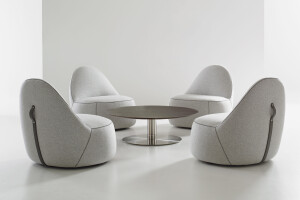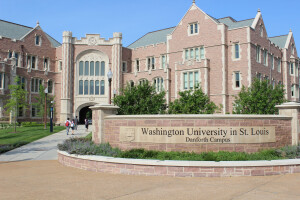The James M. McKelvey, Sr. Hall at Washington University in St. Louis creates a flexible, interdisciplinary, energy-efficient, and sustainable environment for world-class computational research and education. Designed for adaptability and rapid change, the new home of the Department of Computer Science & Engineering provides a model for interdisciplinary collaboration, fostering student engagement and high-impact research.
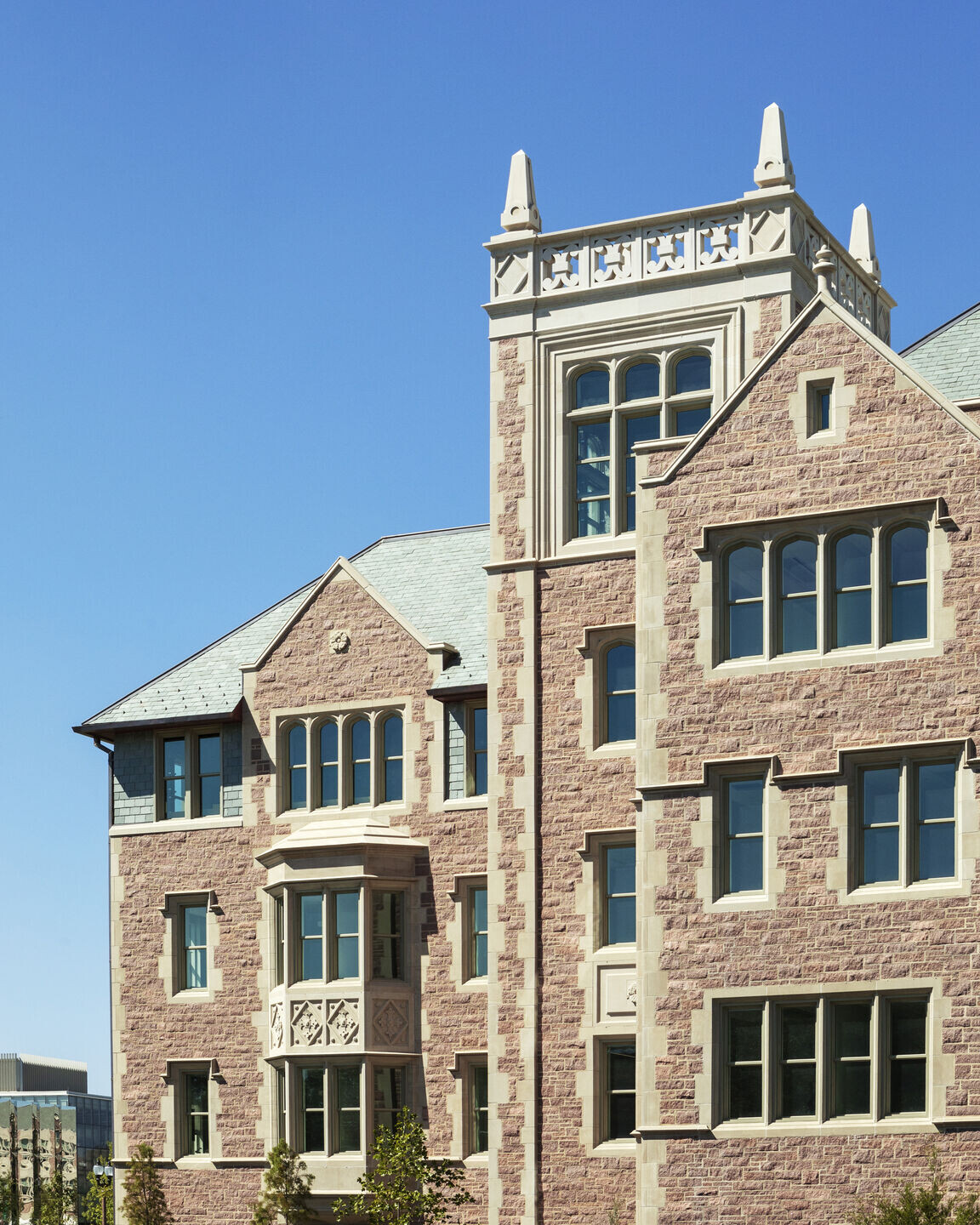
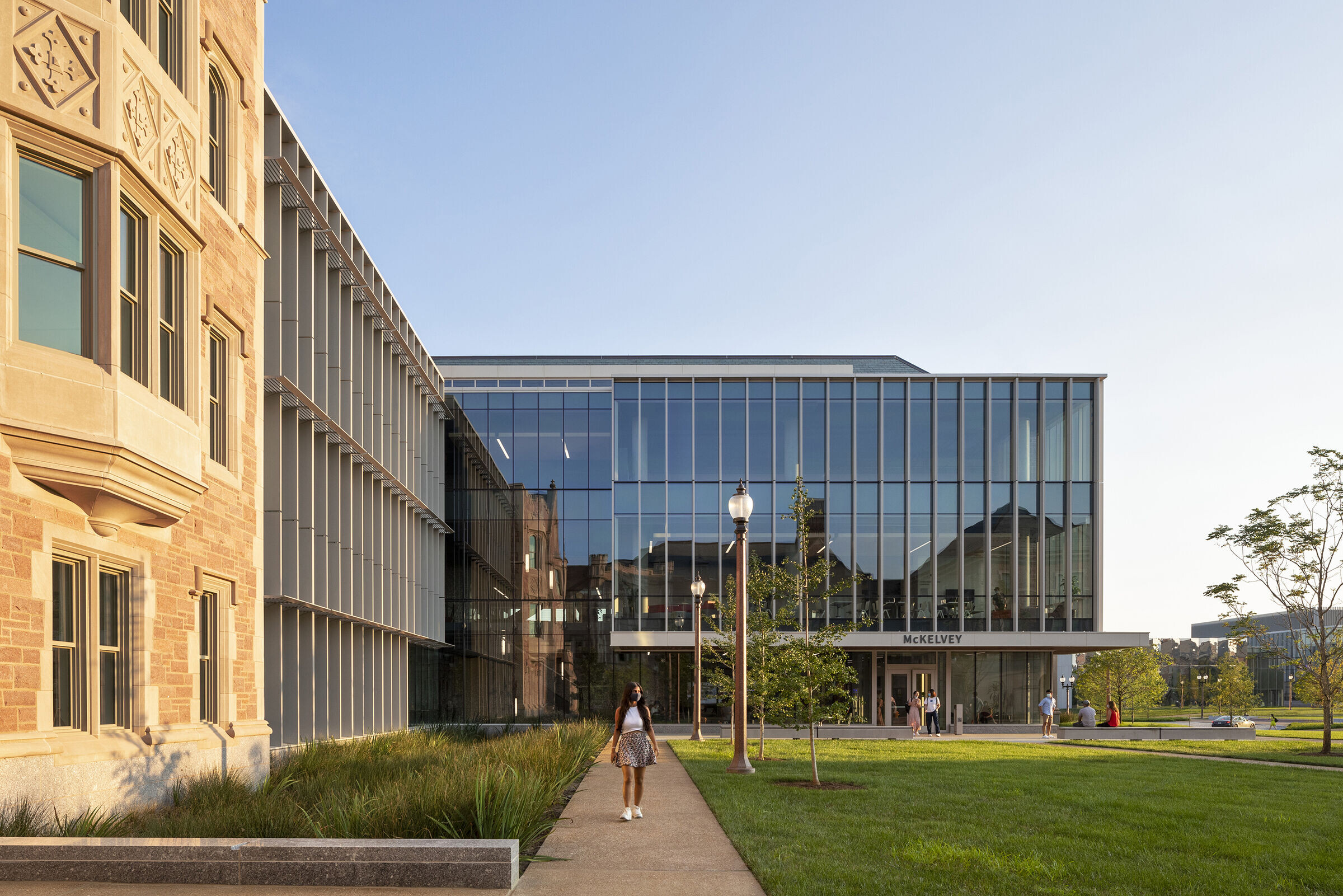
Replacing a vast surface parking lot, the new building is sited at a prominent corner of the historic campus along a formal allée, anchoring a vehicular entrance and framing the historic axial view toward the campus center. McKelvey Hall, which physically connects to an existing collegiate gothic campus building, strives for resonance with its context and its place. The outer perimeter responds to the university’s masonry and collegiate gothic architecture and features a combination of Missouri red granite and limestone, while a newly formed inner courtyard adopts a transparent and informal language, reflecting the innovative research taking place inside the building and simultaneously responding to recent contemporary campus additions.


The building’s interiors echo this duality, with internal spaces for offices and administration synced to the building’s traditional collegiate gothic exteriors, and an open, flexible concept providing a dramatic window into the contemporary, state-of-the-art collaboration spaces and computational research work areas via the courtyard-facing, multi-story curtain wall. Various research disciplines are connected to one another with a series of communicating stairs that come together in the Commons.

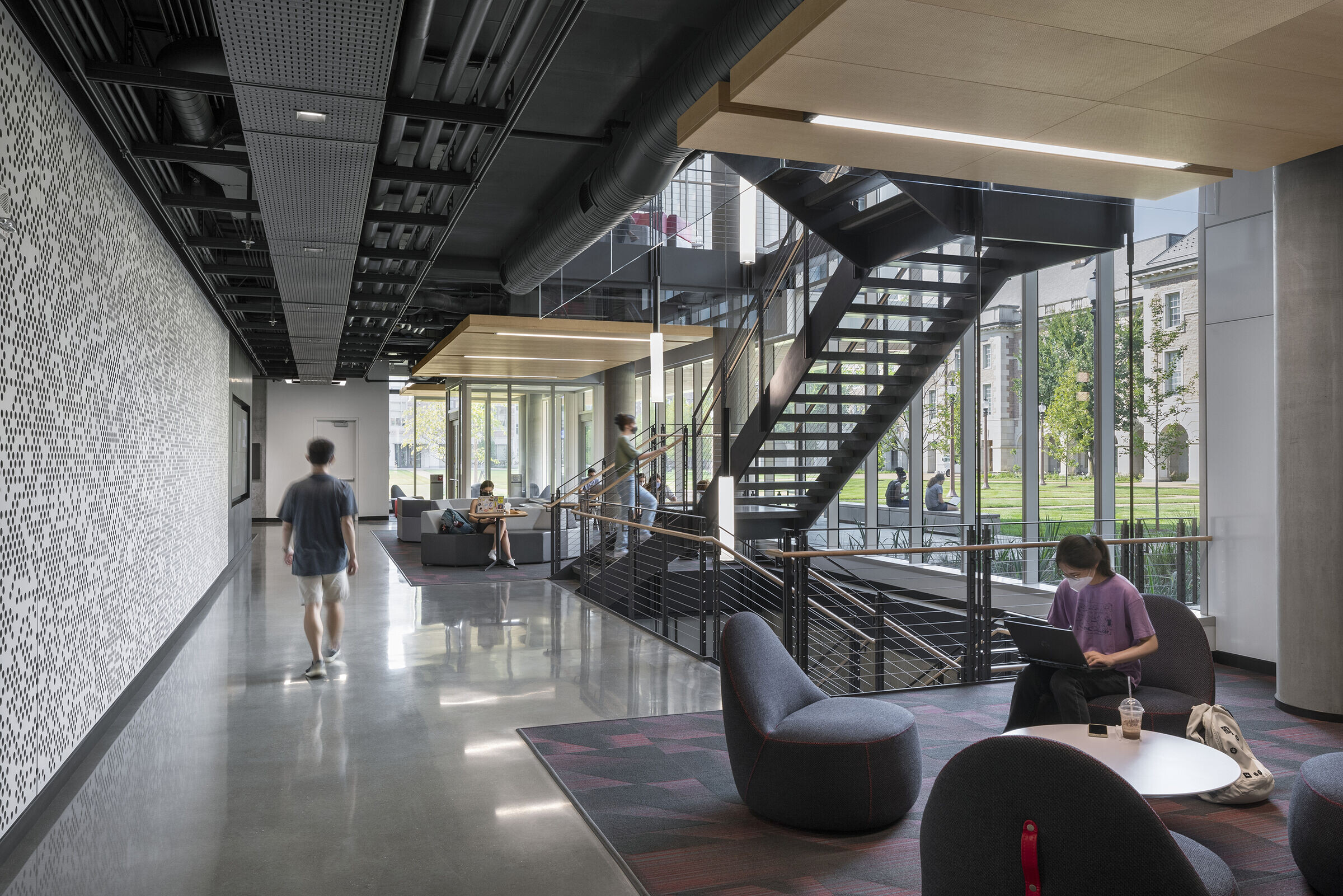
Sustainability is an important focus for the university. With attention to solar orientation and shading, ample natural light, high-performance façade design, photovoltaic solar panels and energy efficient mechanical design strategy, the new building for the Department of Computer Science & Engineering promotes student productivity and well-being campus-wide. McKelvey Hall followed an integrated design process incorporating the principles of sustainable design with attention to energy efficiency, low impact materials, reuse and recycling, quality and durability, and health and wellness. The building is on target to meet LEED 4.0 Gold v.4 standards.


Team:
Architects - Perkins Eastman
Associate Architect – patterhn ives, llc
MEP Engineering, AV/IT – Ross & Barruzzini
Structural Engineering – KPFF
Landscape Design – Michael Vergason Landscape Architects
Civil Engineering – Cole
Lighting – Envision Lighting Design
Acoustics – Kirkegaard
Cost Estimator – Capital Projects Group
Construction Manager – McCarthy Building Companies
Photographer - Paul Rivera

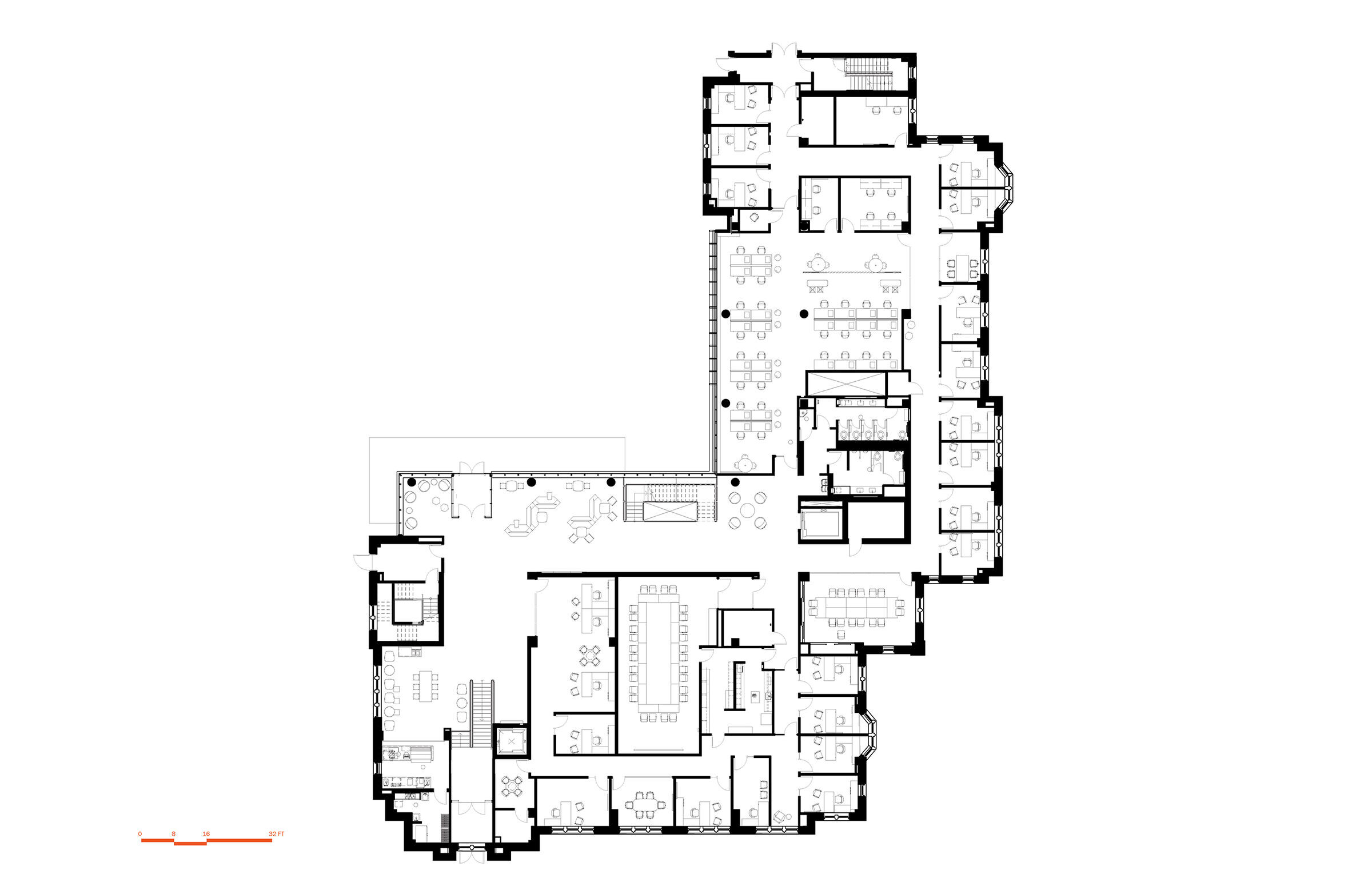
Materials Used:
Missouri Red Granite: John J Smith Masonry Co
Limestone: Architectural Stone Sales, Inc
Polished concrete: Advanced Floor Products, Inc
Carpet tile: J+J Flooring Group and Shaw contract
Tile: Daltile, Nasco Stone & Tile
Doors: 400T Series, Tubelite Inc, Quarter Sawn Red Oak, Gravois Planing Mill Company
Curtain wall: 7250i-HRX, Wausau Windows
Windows: 1450S Series, Winco Window Co
Roofing: Slate Shingles, Camara Quarry
Interior lighting: Feelux, Finelite, Metalux, OCL, Surelites, USAI LTG.
Interior furniture: Seating and Table Manufacturers: Bernhardt Design, Hightower, Davis Furniture, HBF.
Upholstery: Bernhardt, Ultrafabrics, HBF Textiles
Misc.: Arktura, Clarus, Formica, Raumplus, Wilsonart, Inscape



